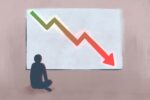Among all the loss and uncertainty over the past two years, Halloween has remained a holiday where Americans can put on their costumes, hand out treats and try to forget about their woes. However, in a spooky turn of events, the rising cost of decorations, candy, costumes and “haunt events” — like haunted houses or Disneyland’s annual “Oogie Boogie Bash” — demonstrate the after-shock of the pandemic and historic inflation rate. Here’s a look at the ways popular Halloween activities have been affected by inflation, how many Americans are responding to these changes in a post-pandemic world and suggestions for reducing the ever-increasing cost of celebrating one of America’s favorite holidays.
National Trends in Inflation and Spending
The National Retail Federation (NRF) is described as an “industry trade group” that is “the world’s largest retail trade association.” Earlier this year, the NRF published a survey conducted by Prosper Insights & Analytics that estimated a 69% participation rate in this year’s Halloween activities as opposed to 65% in 2021 and 68% in 2019. The NRF has further reported that it predicts $10.6 billion — a 5% increase from 2021’s $10.1 billion in spending and a 20% increase from 2019’s $8.8 billion — will be spent on Halloween festivities, with an expectation of $100-$169 spent per family in comparison to the $86 per family average in 2019. Six-figure salary earners and parents of young children are expected to spend the most money at $340 and $309, respectively. The estimates for individual and national spending defy the negative impact of inflation implied in a LendingTree survey where 57% of respondents said inflation was affecting their Halloween spending. Additionally, a staggering one-third of respondents in consumer surveys disclosed that they plan to spend more than they can afford, particularly those between the ages 18 and 24 as well as parents of young children.
In September, the Bureau of Labor’s (BLS) Consumer Price Index (CPI), which monitors inflation in an urban market, determined the inflation rate for the last 12 months was 8.2%, in comparison to 2021’s 7%. And that core inflation, which “excludes volatile food and gas,” had a rate of 6.6%, a 0.3% increase from the 6.3% core inflation rate in August. This increase is the largest seen since August 1982 when core inflation increased by 0.6% on a monthly basis. Similarly, the food index increased by 11.2% over a 12-month period between September 2021 and this past September and 0.8% since August.
The Landscape of Decorations, Candy, Costumes and Events
In accordance with a hike in spending, many large retailers such as Party City and Home Depot are increasing their number of seasonal employees as well as expanding their product lines. Pumpkin prices have increased by 16%-20% on average, as is demonstrated by this year’s estimated price of $5.68 per pumpkin, a 73 cent increase from last year’s $4.92. Of the $10.6 billion estimated to be spent, $3.4 billion of it is likely to be on decorations such as pumpkins or Home Depot’s popular 12-foot skeleton. On a national level, candy is about 13.1% more expensive than it was last year as per the BLS. This increase is reportedly the “largest yearly jump in candy prices” in CPI history. For reference, there was an equivalent increase during the nine-year period between 1997 and 2006. $3.6 billion has been assigned to costumes and $1.7 billion ($200 million more than in 2021) on adult costumes, which, according to the same NRF survey, is the most seen since 2017. Furthermore, nationally beloved Halloween events like the “Oogie Boogie Bash” have increased their prices by 19% since 2019, though attendees are more pleased by the dynamic pricing of the event than concerned over the prices themselves.
The Large and Insidious Role of Inflation
It is an unfortunate, indisputable truth that the recent global and national inflation has increased production costs, which then translates to higher prices for customers who see little to no increase in their yearly earnings.
Inflation for decorations such as pumpkins originates from the surcharge on gas and freight, increased transportation costs and supply chain shortages and disruptions, which all lead to an increased price of fertilizers. On top of supply chain issues and the impacts of inflation, this year was unprecedentedly hot and dry due to warming temperatures and decreased rainfall. In turn, there was less pollination and consequently, crop sizes were halved and the pumpkins themselves were smaller in size.
Similar reasons explain the incredible spike in the cost of candy and gum. On top of supply chain disruptions, hot weather and dry conditions led to poor beet sugar production this year, which has translated to a rise in the cost of sugar and sugar substitutes (17%) as well as flour (24%). Labor shortages are another factor in the current inflation rate, though a Hershey spokesperson contended that the 14% increase in overall prices this past summer was not due to shortages in labor or suspected culprits like sugar and cocoa. Additionally, they stated that sell-through retail rates were continually improving. This is in line with Hershey CEO Michele Buckley’s claim that Hershey needs to prioritize “everyday candy packaging over Halloween” in discussing how the decision to increase prices had been “critical to enable users to increase advertising and merchandising levels.”
The price of clothing has reportedly increased by 5.5% between September of this year and September 2021. The price of homemade clothing, which should incorporate the rising cost of the production materials themselves like sewing machines and fabric, has increased by 11% in the same time frame.
As is the case for decorations, candy and costumes, the cost of Halloween events has been climbing at such an alarming rate because of a “pent-up demand” following the COVID-19 pandemic. It is purported that middle and upper-middle-class families have accumulated a large amount of savings over the past couple of years by way of stimulus checks and other relief funds. Moreover, the role of social media, in adolescent circles specifically, has created a competition of sorts that encourages individuals to seek novelty and inspiration for events, costumes and countless other avenues. It seems that a fear of missing out (FOMO) is stronger than ever as a result of shared, long-term isolation wherein people’s lives have become half-online and half-physical.
Trick, Treat or Travel
A recent survey by ValuePenguin asked 1,600 Americans about their fall plans. According to the survey, 84% of respondents plan to celebrate Halloween and 40% of respondents want to travel to celebrate. The same number of those wanting to travel said that they had done so in the past. The survey found that the demographics that were most likely to have travel plans for Halloween were parents with children under 18 and millennials. Parents with younger children said they think they will pay more than the expected $504 price for travel. The estimated price of such travel also accounts for most survey respondents who said that they will drive to their travel destination, with the second most popular method being by airplane. The average domestic airfare price over Halloween weekend is estimated at $224 per ticket, while international airfare is projected to cost $817. These ticket costs reflect a 25% and 39% increase from tickets purchased in 2021.
So why do Americans maintain such fervor for Halloween festivities as is demonstrated by their willingness to pay such a hefty price? According to an earlier survey by ValuePenguin, over 50% of respondents did not have travel plans over the summer, which has exacerbated a post-pandemic urge to go out and enjoy the world as thoroughly as they once had or had planned to. Many people aim to go to a destination that hosts fall weather, a plentiful Halloween weekend and an impressive local history such as Salem, Massachusetts; Sleepy Hollow, New York; or Savannah, Georgia. Likewise, many millennials are interested in traveling to Las Vegas for its Halloween-themed parties and events.
To account for this disconcerting price tag, it is advisable to begin planning, booking and budgeting about six months ahead of time. Additionally, one would do well to prioritize according to personal or familial interests as well as create a travel itinerary comprised of creative, inexpensive activities, such as a self-guided tour.
What Can Be Done?
Though the road to acquiring a livable financial situation seems more daunting than ever, there remains a multitude of ways to save. For example, one could shop locally and purchase pumpkins or other Halloween-related foods from nearby farms and stores to mitigate the impact of transportation costs by minimizing transportation needs. To combat the cost of sweets, it is more economical to buy them in bulk and then share or donate leftovers to a local children’s shelter. By planning for costumes and celebrations earlier in the year, a majority of spending will occur before holiday pricing takes hold. It is a wonderful yet often overlooked idea to shop at dollar stores or buy costumes from stores that don’t necessarily specialize in Halloween costumes. There has been a recent uptick in balloon decor on account of the popularity, cost-efficiency, easy cleanup and diversity of balloons for Halloween-themed parties. Importantly, it is never a bad idea to repurpose clothing and materials or, alternatively, to donate items that are no longer used so that others may save on Halloween shopping.

















